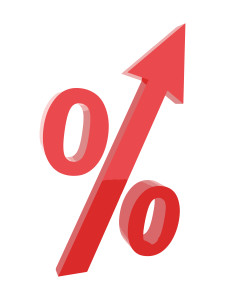AARP Hearing Center
What You Can Expect When the Fed Raises Rates
By Eileen Ambrose, September 10, 2015 05:41 PM

policymakers will meet next week to decide whether to raise a key interest rate. If they do, it’ll be the first time since June 2006.
To put that in perspective, the New York Times notes that back then, Facebook was still mostly for college students and its competitor, MySpace (remember MySpace?), had 10 times as many users.
If policymakers nudge this rate up, it could have a ripple effect on the pocketbooks of consumers. Many experts predict, though, that this first rate increase would be only a quarter-percentage point, not enough to break the household budget but enough to get everyone’s attention.
“The significance of the initial rate hike by the Fed is not the rate hike itself,” says Greg McBride, chief financial analyst at Bankrate.com. “Instead, it’s like the first dusting of snow that you get in the beginning of winter — it signifies that the seasons have changed.”
Get the latest tips on protecting your money and saving for retirement — AARP Money newsletter »
And once the season changes, the forecast likely will be more rate hikes.
“What borrowers need to be mindful of is the potential cumulative effect of a series of Fed [interest rate increases] for the next 24 months,” McBride says.
The federal funds rate, what banks charge one another for overnight loans to boost their cash reserves, was lowered to near zero in the aftermath of the 2008 financial crisis. If the Fed raises this short-term rate, banks will move quickly to increase the prime rate, or what they charge their most creditworthy borrowers. That, in turn, will have an impact on certain consumer financial products.
What can you expect?
Credit cards. Most cards carry a variable rate tied to the prime rate, and card issuers will move swiftly to pass on any increase, McBride says.
This is bad news, especially for those with high credit card balances. Consumers should try to reduce their card debt before rates go up, McBride advises, or take advantage of zero percent interest card offers for transferring a balance while those deals are still available. They won’t be once the Fed bumps up rates.
Home equity lines of credit. Like credit cards, these usually involve a variable rate, and borrowers will see their payments rise as interest rates go up.
If you have a home equity line of credit that’s at least 10 years old, consider refinancing to lock in today’s more favorable terms before the Fed acts, recommends Keith Gumbinger, vice president of HSH.com, a mortgage information site. Rates on credit lines issued years ago are often capped at 2 or 3 percentage points above the prime rate. Current caps are typically 1 to 1.5 percentage points over prime, Gumbinger says.
Mortgages. Rates on new 30-year fixed mortgages have more to do with inflation and economic conditions than an uptick in short-term rates by the Fed, Gumbinger explains.
Rates on new adjustable-rate mortgages will respond to the Fed’s move, although not in lockstep, Gumbinger says. If the Fed raises the rate by a quarter-percentage point, adjustable mortgages could rise by less than half that because lenders don’t want to deter borrowers, he says.
Adjustable-rate mortgages can carry a fixed rate for a period and then adjust annually. If your loan is scheduled to adjust after the Fed lifts the rate, your rate will go up, too, but again, not as much, Gumbinger adds.
Get discounts on insurance and banking services with your AARP Member Advantages. »
Auto loans. The rates on these have less to do with the Fed or the prime rate than other factors, says credit expert John Ulzheimer.
For instance, your rate may be more determined by the amount of down payment, the car model and whether you borrow from a bank or the finance arm of the manufacturer, he says.
Student loans. Each summer, Uncle Sam sets the rate on new federal student loans (currently at 4.29 percent), and that rate remains fixed for the life of the loan. These loans are tied to the 10-year Treasury note, which is less influenced by Fed action on short-term rates, explains Mark Kantrowitz, publisher of Edvisors, a student-aid-information site.
However, many private student loans carry a variable rate tied to the prime rate or another benchmark. If these benchmarks go up, students can expect to see a similar rate increase on their loans, Kantrowitz says.
Borrowers shouldn’t be too alarmed, he adds. Even if rates went up a full percentage point, the monthly payment on a 10-year, $10,000 federal Stafford loan would increase by only $4.86.
Savings. Alas, savers who have received next to nothing for their deposits for years may not see their patience rewarded anytime soon.
“Savers will have to shop around to get the best deal,” says Bankrate’s McBride. “Not everyone is going to pass along the higher rates to savers.”
Photo: Sibgat/iStock
Also of Interest
- Top 5 college 529 saving plans
- 10 Things you should know about writing a will
- Quiz: How much do you know about social isolation?
- Join AARP: savings, resources and news for your well-being
See the AARP home page for deals, savings tips, trivia and more.































































